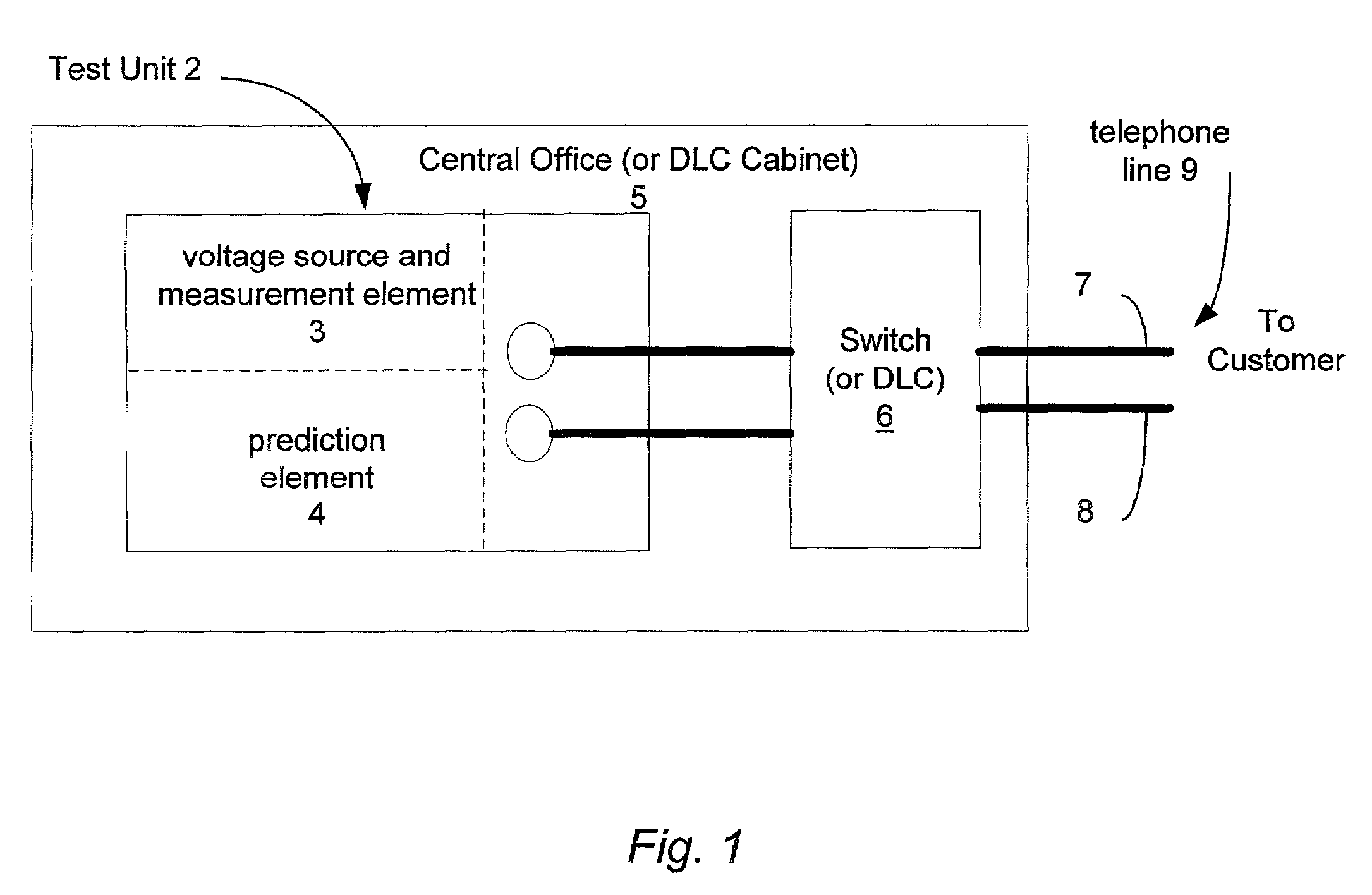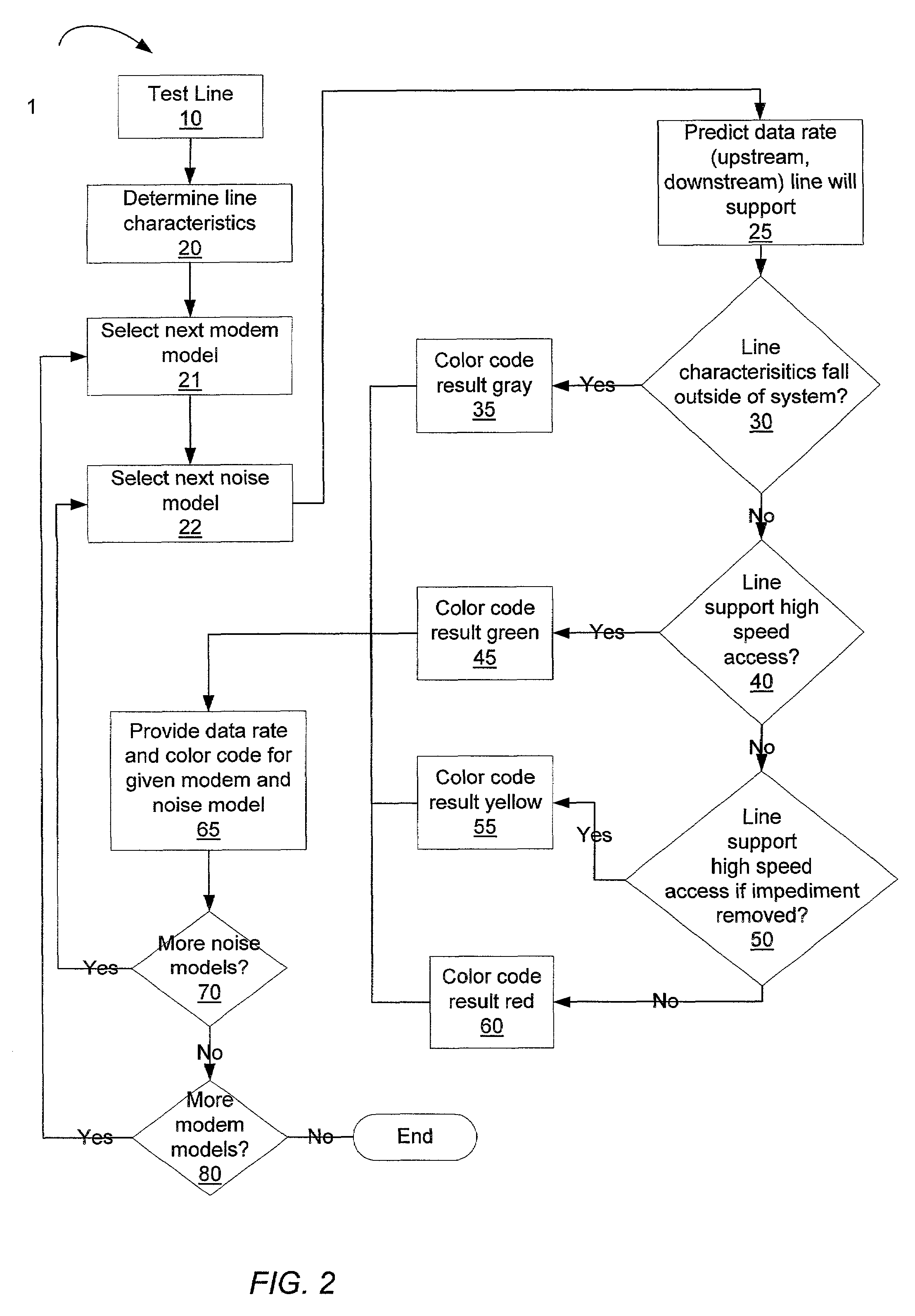Binning of results from loop qualification tests
- Summary
- Abstract
- Description
- Claims
- Application Information
AI Technical Summary
Benefits of technology
Problems solved by technology
Method used
Image
Examples
Embodiment Construction
[0019]There currently exists a large demand for providing high-speed access such as Integrated Services Digital Network (ISDN) or various types of Digital Subscriber Line (xDSL) service for subscribers to the Internet. Most of these subscribers desire to receive this access through their existing POTS (Plain Old Telephone Service) lines. POTS lines were originally built to carry voice, and not necessarily the higher frequencies associated with ISDN or xDSL. Some percentage of POTS lines are capable of providing high-speed access desired by subscribers. Predicting the ability of existing POTS lines to support high-speed access is typically labor intensive, requires a great deal of time, and requires a skilled person to interpret the results.
[0020]The present invention provides for automated testing of existing POTS lines to estimate the capability of the line to provide high-speed service and further to present the results of the testing in an easily discernable format. The testing p...
PUM
 Login to View More
Login to View More Abstract
Description
Claims
Application Information
 Login to View More
Login to View More - R&D
- Intellectual Property
- Life Sciences
- Materials
- Tech Scout
- Unparalleled Data Quality
- Higher Quality Content
- 60% Fewer Hallucinations
Browse by: Latest US Patents, China's latest patents, Technical Efficacy Thesaurus, Application Domain, Technology Topic, Popular Technical Reports.
© 2025 PatSnap. All rights reserved.Legal|Privacy policy|Modern Slavery Act Transparency Statement|Sitemap|About US| Contact US: help@patsnap.com



